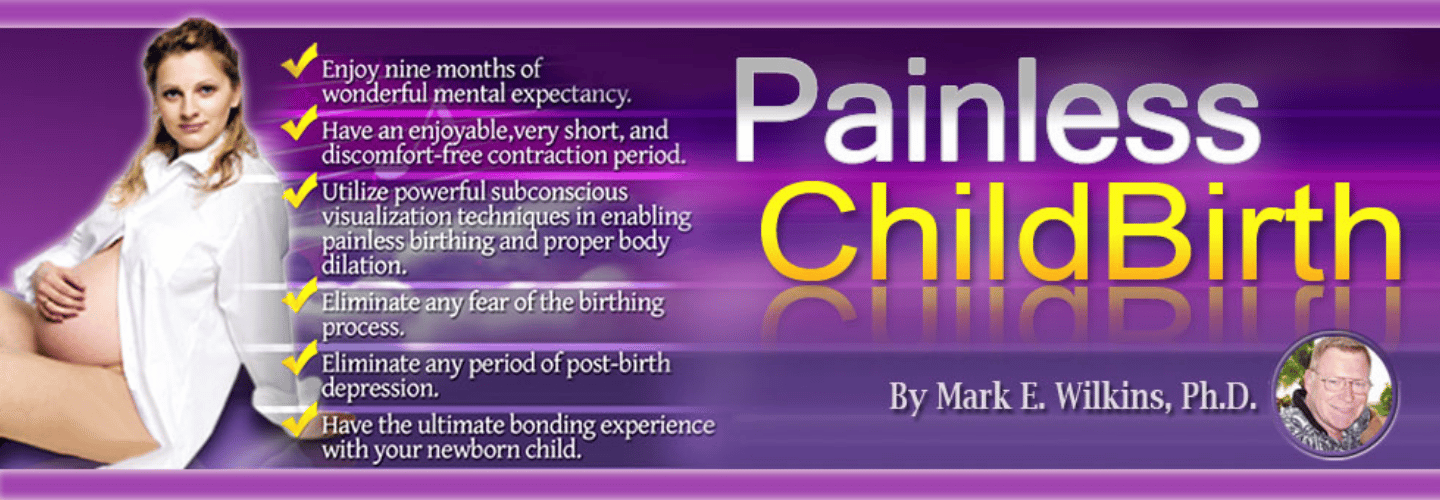
Considering the challenges that can accompany the labor process, exploring alternative methods for relaxation and pain management becomes essential. Guided imagery and hypnosis offer a non-invasive approach that taps into the mind-body connection, providing expectant mothers with a means to navigate the intensity of labor with increased calmness and control. By understanding how these techniques influence perception and physiological responses, one can appreciate the potential benefits they bring to the labor experience.
Benefits of Guided Imagery in Labor
The utilization of guided imagery during labor offers a myriad of benefits that encompass reducing stress, anxiety, and tension, thereby fostering a more tranquil and positive birthing experience. This relaxation technique aids in pain management by decreasing the perception of discomfort, lowering blood pressure, and enhancing oxygen levels in both the mother and baby.
Through visualization of a serene setting, deep breathing exercises, muscle relaxation, and positive affirmations, guided imagery creates a calming environment conducive to labor. In addition, involving a partner or doula in this process can provide additional support, encouraging a deeper state of relaxation for the mother.
Regular practice of guided imagery not only assists in handling stress and preparing for labor but also positively impacts overall well-being, empowering women to navigate the challenges of childbirth with greater ease and composure. Embracing guided imagery during labor can truly transform the birthing experience into a more peaceful and empowering journey.
Hypnosis for Pain Management in Labor
Utilizing hypnosis as a method for pain management during labor involves directing one's focus inward and increasing receptiveness to suggestions aimed at alleviating discomfort and enhancing coping mechanisms.
Hypnosis in labor is a powerful tool that can promote relaxation, alter pain perceptions, and improve coping skills throughout the childbirth process. Research indicates that hypnosis may lead to a decreased need for analgesia during labor, offering a natural and potentially effective alternative for pain relief.
Whether administered through hypnotherapy guided by a practitioner or self-hypnosis techniques taught to expecting mothers, hypnosis shows promise in reducing anxiety, fear, and enhancing mood during labor. By addressing the emotional and psychological aspects of pain perception, hypnosis can complement traditional pain management strategies, empowering women to navigate labor with greater ease and confidence.
Embracing hypnosis as a tool for pain management in labor can contribute to a more positive childbirth experience, fostering a sense of control and well-being amidst the intensity of labor.
Techniques for Relaxation During Labor

During labor, employing techniques for relaxation such as guided imagery and hypnosis can greatly aid in reducing stress and promoting a sense of calmness for expectant mothers.
Guided imagery involves visualizing peaceful scenes, while hypnosis focuses on altering perceptions of pain. These nonpharmacological techniques are known to help reduce stress, anxiety, and pain levels in expecting mothers.
Whether self-administered or guided by a practitioner, both guided imagery and hypnosis offer effective ways to manage anxiety and promote relaxation during labor. Research suggests that these techniques not only provide pain relief but also enhance overall well-being.
Impact of Guided Imagery on Labor
Guided imagery has been demonstrated to notably reduce labor pain, offering women effective stress management techniques during childbirth.
By utilizing positive affirmations and visualization methods, guided imagery contributes to a more positive birth experience.
Its calming effects can enhance relaxation for both the mother and the baby, fostering a more comfortable labor process.
Labor Pain Reduction
Hypnosis and guided imagery techniques have demonstrated significant efficacy in reducing the intensity of labor pain and enhancing overall satisfaction with pain relief methods. Studies have shown that utilizing guided imagery during labor may decrease the necessity for pain medication, offering a more natural approach to pain management.
By incorporating hypnosis and guided imagery, women can positively influence their childbirth experience by reducing anxiety and fear associated with labor pain. These techniques promote relaxation, contributing to a more positive and empowering birth experience.
The benefits of guided imagery in labor extend beyond pain reduction, impacting the overall well-being of mothers during this transformative time.
Stress Management Techniques
Enhancing the labor experience through stress management techniques like guided imagery fosters a positive and empowering environment for expectant mothers.
Guided imagery is a powerful tool that can help reduce stress, anxiety, and tension during labor, contributing to a more relaxed atmosphere. By incorporating positive affirmations and visualization of calming scenes, mothers can enhance relaxation and coping skills, leading to better outcomes.
This practice also has physiological benefits, such as lowering blood pressure, reducing pain, and improving oxygen levels for both the mother and the baby. Partner support or the presence of a doula during guided imagery sessions can offer additional encouragement and assistance.
Regular practice of guided imagery equips expectant mothers with effective stress management skills, promoting overall well-being and a more positive birth experience.
Positive Birth Experience
The integration of guided imagery techniques into labor preparation has demonstrated a notable impact on fostering a positive birth experience for expectant mothers.
Research from a randomized controlled trial revealed that the CD intervention group, utilizing guided imagery, exhibited enhanced Wellbeing post-scores according to the Edmonton Scale, indicating a significant improvement in the birth experience.
Guided imagery not only aids in pain management but also reduces anxiety levels during and after delivery, promoting relaxation and overall well-being for both mothers and babies.
By incorporating positive affirmations and reframing the labor experience, guided imagery contributes to stress management and better preparedness for labor and delivery.
Consistent practice of guided imagery and hypnosis offers valuable support in managing stress, enhancing oxygenation, and potentially reducing the need for pain medication during labor.
Self-Administered Relaxation Methods
When preparing for labor, it's essential to explore self-administered relaxation methods. These techniques offer a range of benefits, including stress reduction, enhanced well-being, and improved coping mechanisms.
Incorporating self-care practices like guided imagery and hypnosis can be instrumental in promoting a calm and positive birthing experience.
Benefits of Self-Relaxation
Utilizing self-administered relaxation techniques such as guided imagery and hypnosis can greatly alleviate stress, anxiety, and tension experienced during labor, promoting a more comfortable and positive birthing experience. These methods offer various benefits:
- Stress Reduction: Self-relaxation techniques help in reducing stress levels, creating a calmer environment for both the mother and baby.
- Pain Management: By incorporating guided imagery and hypnosis, individuals can effectively manage pain during labor, leading to a more controlled and manageable birthing process.
- Enhanced Relaxation: Regular practice of positive affirmations and guided imagery enhances relaxation, contributing to an overall sense of well-being and preparedness for the labor and delivery journey.
Techniques for Self-Care
Incorporating techniques for self-care through self-administered relaxation methods like guided imagery and hypnosis can empower women to actively manage stress and promote relaxation during labor. These self-administered relaxation techniques offer a safe and non-pharmacological approach to stress reduction, anxiety management, and pain relief, enhancing overall well-being.
Importance of Relaxation
The importance of relaxation through self-administered methods like guided imagery and hypnosis cannot be overstated, especially in the context of labor where managing stress and promoting calmness are crucial for a positive birth experience. Utilizing these techniques offers a variety of benefits:
- Stress Reduction: Guided imagery and hypnosis help in reducing stress levels, creating a more relaxed environment during labor.
- Pain Management: These methods can assist in decreasing pain perception, providing a more comfortable birthing process.
- Well-being Enhancement: By incorporating positive affirmations and promoting relaxation, overall well-being for both the mother and baby can be greatly improved.
Embracing relaxation techniques like guided imagery and hypnosis can lead to a more positive and empowering labor experience, fostering a sense of readiness and preparation for childbirth.
Enhancing Coping Skills With Visualization
Enhancing coping skills through visualization techniques is a pivotal component in preparing for and managing the challenges of labor. Guided imagery and hypnosis offer powerful tools for reducing anxiety, improving pain management, and enhancing relaxation during childbirth.
By focusing on positive visualizations, women can redirect their attention inward, minimizing external distractions and increasing receptivity to suggestions. Research indicates that incorporating visualization in guided imagery and hypnosis can greatly impact mood, pain perception, and the overall birth experience.
These techniques empower women to feel more in control and prepared for childbirth, fostering a sense of confidence and resilience. By practicing visualization, women can cultivate coping skills that enable them to navigate the demands of labor with greater ease and composure, ultimately contributing to a more positive and empowering childbirth experience.
Managing Pain Perception in Labor

To effectively manage pain perception in labor, implementing hypnosis techniques can greatly reduce the need for pharmacological pain management methods. Hypnosis interventions focus on the affective aspects of pain, such as reducing anxiety and fear, which can enhance mood during labor. Research indicates that hypnosis can modulate pain perception by engaging specific brain regions involved in pain processing. Here are three key aspects of using hypnosis to manage pain perception in labor:
- Relaxation Promotion: Hypnosis interventions aim to promote relaxation, creating a conducive environment for pain management and labor progression.
- Coping Mechanisms Enhancement: By enhancing coping mechanisms through focused attention, hypnosis helps individuals better manage the challenges of labor pain.
- Suggestibility: Academic discourse surrounds how hypnosis influences suggestibility, impacting perceptions, mood, and behavior during labor. Understanding this aspect can lead to more effective pain management strategies.
Frequently Asked Questions
How Does Hypnosis Help With Labor?
Hypnosis in labor offers significant benefits by aiding in pain management, stress reduction, and deep relaxation. It enhances mental preparation, coping skills, and fosters a positive mindset.
Through empowerment techniques, hypnosis establishes a strong mind-body connection, providing emotional support during childbirth. Additionally, it emphasizes breathing techniques for enhanced relaxation and overall well-being.
Hypnosis is a valuable tool in labor for its holistic approach to childbirth support.
What Are the Benefits of Hypnosis During Pregnancy?
Hypnosis during pregnancy offers a range of benefits for expectant mothers. It aids in stress reduction, pain management, and anxiety relief, fostering a strong mind-body connection. By providing emotional support and empowering techniques, hypnosis promotes a calm birthing experience.
Techniques like focused breathing and self-hypnosis can instill a positive mindset, leading to a more empowering and comfortable labor process. One interesting statistic: Hypnosis has been shown to reduce pain perception by up to 50% in women during labor.
What Is the Purpose of Guided Imagery?
Guided imagery serves as a powerful tool in enhancing the mind-body connection through visualization techniques, positive affirmations, and mental rehearsal.
By inducing a relaxation response, it aids in stress reduction, emotional support, and pain management during labor.
Self-soothing techniques, such as focused breathing, are promoted through guided imagery, ultimately fostering a calmer and more positive experience for both the mother and the baby.
How Is Imagery Used for Relaxation?
Guided imagery is utilized for relaxation through various techniques such as stress relief, anxiety reduction, and enhancing the mind-body connection. Visualization, deep breathing, and muscle relaxation are core components that aid in achieving a state of calm.
Positive affirmations, pain management, emotional support, and mental focus are further benefits derived from the practice. These methods collectively promote relaxation, reduce tension, and foster a sense of well-being.
Conclusion
To sum up, guided imagery and hypnosis are powerful tools for relaxation during labor. They offer natural and effective ways to reduce stress, anxiety, and pain perception. Studies have shown that incorporating these techniques can decrease the need for pharmacological pain management by up to 50%. This leads to a more comfortable and empowering birth experience for both the mother and the baby.
Consider implementing these methods to enhance coping skills and promote a positive labor experience.





